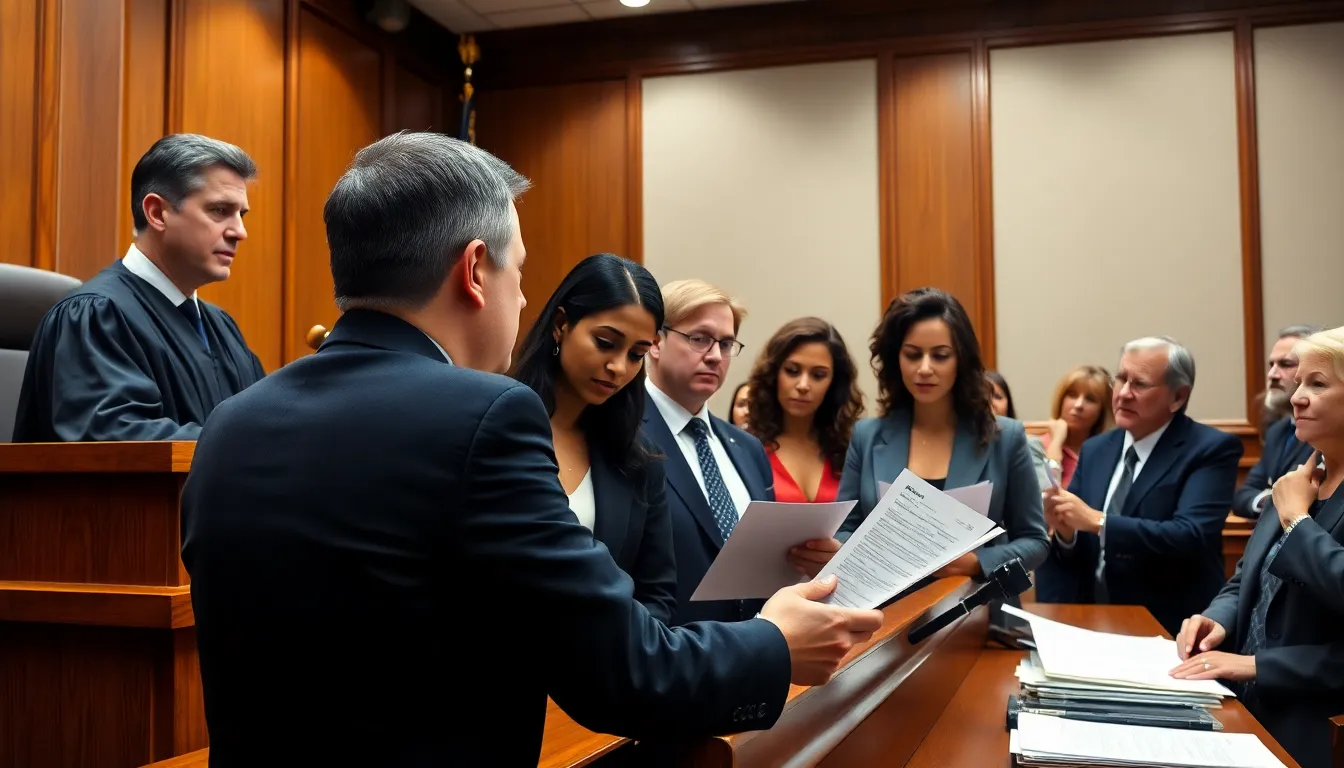In a world where headlines can make or break reputations faster than a speeding bullet, understanding the fine line between reporting and defamation is crucial. Ever wondered what it takes for the media to face the wrath of a libel lawsuit? Spoiler alert: it’s not just about getting the facts wrong. Intent plays a starring role in this drama, and it’s more complicated than a soap opera plot twist.
To successfully sue the media for libel, they must act with actual malice or reckless disregard for the truth. It’s like trying to catch a greased pig—difficult and slippery. So, buckle up as we dive into the nuances of intent in libel cases, where truth is not just a defense, but a game changer for journalists and their critics alike.
In Order for The Media to Be Sued For Libel, The Media Must Act with what Intent?
Libel laws focus on false statements causing harm to an individual’s reputation. To succeed in a libel claim against the media, a plaintiff must establish that the statement was false. Actual malice must be proven in many cases, particularly those involving public figures.
Intent plays a crucial role in determining liability. If the media acted with actual malice, it means there was knowledge of the statement’s falsity or a reckless disregard for the truth. Journalists often face challenges in navigating this aspect, especially when addressing sensitive topics.
Reckless disregard occurs when a media outlet ignores obvious signs that a claim may be false. Courts require evidence that shows the defendant consciously chose to publish questionable information. Additionally, the standard for private figures differs from that of public figures, typically necessitating only negligence for the former.
In most libel cases, defendants can assert defenses like truth or opinion. If the statement is deemed true, that fact serves as an absolute defense against libel claims. Conversely, opinions generally do not carry the same liability, provided they do not imply false statements as fact.
Understanding the intent behind statements is vital for both media and individuals claiming defamation. Clarity around intent can ultimately influence legal outcomes and the responsibilities of journalists in their reporting.
The Role of Intent in Libel Cases

Intent plays a crucial role in determining the outcome of libel cases. It helps to distinguish between defamatory statements and protected speech.
Actual Malice Standard
The actual malice standard requires evidence of deliberate intent to harm. For public figures, this means proving that the media knew a statement was false or acted with reckless disregard for the truth. Courts interpret actual malice stringently, emphasizing the need for a high degree of fault. Successful plaintiffs must present clear proof of this intent, making cases difficult to win. This standard protects freedom of speech while holding journalists accountable for irresponsible reporting. Various landmark cases, such as New York Times Co. v. Sullivan, reinforced this requirement, shaping how courts address media liability.
Negligence Standard
In cases involving private figures, the negligence standard applies instead. Here, plaintiffs only need to demonstrate that the media failed to exercise reasonable care in verifying information. This lowers the burden of proof, making claims more accessible for individuals. The key question becomes whether the outlet acted as a reasonable journalist would under similar circumstances. Courts evaluate factors like the thoroughness of the investigation and the reliability of sources. By establishing negligence, private figures can successfully claim damages based on false statements that harm their reputations. This distinction in standards highlights the varying responsibilities of the media when reporting on public versus private individuals.
Implications of Intent for Media Outlets
Intent plays a crucial role in determining liabilities for media outlets in libel cases. Understanding the implications helps journalists maintain ethical reporting standards.
Consequences of Malicious Intent
Malicious intent can lead to significant repercussions for media organizations. Legal consequences include hefty financial penalties, potential damages, and reputational harm. If a plaintiff successfully proves actual malice, exposure increases for punitive damages. Additionally, malicious reporting undermines public trust in journalism. As a result, victims of defamation may face difficulties rebuilding credibility and personal reputation. The long-term effects can deter media from publishing information perceived as harmful.
Legal Protections for Journalists
Journalists enjoy certain legal protections when reporting on public figures. The First Amendment safeguards freedom of speech, allowing media outlets to report without fear of retaliation. In many cases, courts require that public figures prove actual malice to win libel suits. These protections promote vigorous public discourse on matters of importance. Media organizations may also assert defenses like truth or opinion, which can absolve them of liability. Understanding these legal avenues encourages responsible journalism while balancing the right to report.
Case Studies of Libel in the Media
Libel cases in the media showcase the challenges surrounding intent and truthfulness. High-profile lawsuits highlight these complexities, demonstrating how public figures navigate credibility.
High-Profile Libel Cases
Numerous high-profile libel cases illustrate the media’s precarious position. In the case of New York Times Co. v. Sullivan, the Supreme Court established the actual malice standard, requiring public figures to prove the media acted with knowledge of falsity or reckless disregard. Another significant case, Hustler Magazine v. Falwell, reinforced the need for public figures to demonstrate actual malice for emotional distress claims. These cases underscore the robust defenses available for media organizations while striking a balance between their freedom of speech and accountability.
Lessons Learned from Case Outcomes
Outcomes from these libel cases offer critical lessons for media reporting. First, they emphasize the importance of thorough fact-checking to avoid negligent reporting. Second, courts increasingly favor defenses like truth and opinion, which protect responsible journalism. Public figures face a higher burden of proof, influencing how they approach potential defamation. Ethical reporting standards emerge as paramount, fostering trust with the audience while minimizing litigation risks. Consequently, these legal precedents guide how journalists maintain a balance between free expression and responsible reporting practices.
Conclusion
The intent behind a media outlet’s reporting plays a pivotal role in libel cases. Establishing actual malice or reckless disregard for the truth is essential for plaintiffs, especially public figures, to succeed in their claims. This high bar emphasizes the need for journalists to adhere to ethical standards and conduct thorough fact-checking. When media organizations act with malicious intent, they risk significant legal repercussions and damage to their reputation. Understanding the implications of intent not only safeguards journalists but also promotes responsible reporting, ensuring that the public can trust the information they receive. Balancing freedom of speech with accountability remains crucial in maintaining the integrity of journalism.









